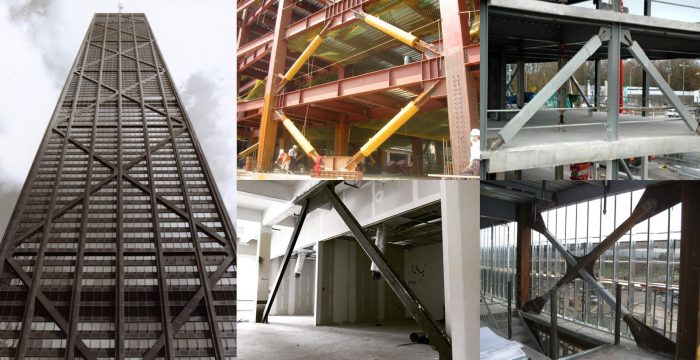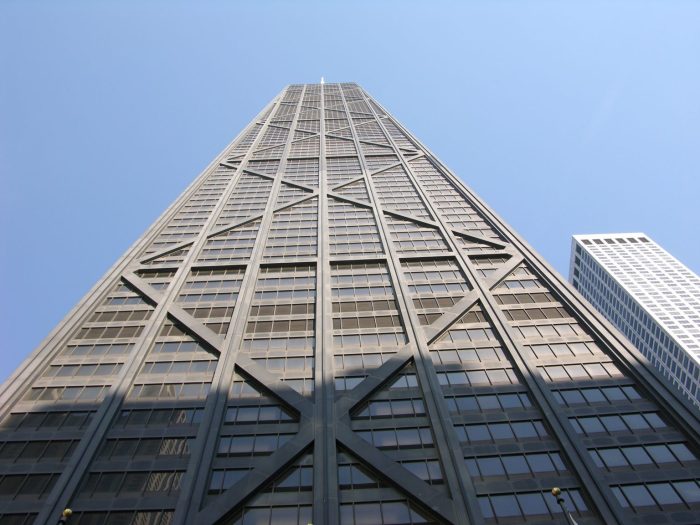Cross bracing can be used to climb onto scaffolding – Cross bracing, a crucial component of scaffolding structures, not only provides stability but also offers a unique opportunity for climbers to ascend these towering platforms. This article delves into the intricacies of cross bracing as a climbing aid, exploring its design, safety considerations, and alternative climbing methods, ultimately providing a comprehensive guide to this specialized technique.
Cross Bracing as a Climbing Aid

Cross bracing, a structural element commonly found in scaffolding structures, can be utilized as an effective climbing aid to ascend onto these elevated platforms. This technique involves using the cross braces as stepping points, allowing workers to climb up the scaffolding safely and efficiently.
Cross bracing is typically composed of diagonal beams that connect the vertical posts of the scaffolding. These beams provide stability to the structure and can withstand significant loads. By placing their feet on the cross braces, workers can distribute their weight evenly and climb up the scaffolding in a controlled manner.
Examples of Cross Bracing Use for Climbing
- Construction workers often use cross bracing to climb onto scaffolding during the construction or repair of buildings.
- Maintenance crews use cross bracing to access scaffolding for routine inspections and repairs of structures such as bridges, towers, and industrial facilities.
- Event organizers use cross bracing to climb onto scaffolding for setting up lighting, sound systems, and other equipment for concerts, festivals, and other events.
Safety Considerations and Risks
- Ensure that the cross bracing is properly installed and secured to the scaffolding structure.
- Wear appropriate safety gear, including a hard hat, safety harness, and non-slip footwear.
- Inspect the cross bracing regularly for any damage or deterioration.
- Avoid overloading the cross bracing by limiting the number of people climbing simultaneously.
Cross Bracing Design and Construction

Structural Design Principles
Cross bracing for climbing purposes is designed to provide a safe and stable support for workers ascending onto scaffolding. The cross braces are typically made of steel or aluminum and are designed to withstand the loads imposed by the climber.
The angle of the cross braces is critical to their effectiveness. The optimal angle is typically between 45 and 60 degrees, as this provides the best balance between strength and stability.
Material Selection and Dimensions
The choice of material for cross bracing depends on the intended load and height of the scaffolding. Steel is the most common material used due to its strength and durability. Aluminum is a lighter alternative but may not be suitable for heavy loads.
The dimensions of the cross braces should be carefully considered to ensure adequate strength and stability. The thickness and width of the braces should be sufficient to withstand the anticipated loads without excessive deflection.
Installation and Maintenance
Proper installation and maintenance of cross bracing are crucial for safety and longevity. The cross braces should be securely attached to the scaffolding structure using bolts or other appropriate fasteners.
Regular inspections should be conducted to identify any damage or deterioration of the cross bracing. Damaged or worn cross braces should be repaired or replaced promptly.
Alternative Climbing Methods for Scaffolding

Ladders
Ladders are a common method of climbing onto scaffolding. They are relatively inexpensive and easy to use. However, ladders can be dangerous if not used properly. They should be placed on a stable surface and secured to the scaffolding to prevent slipping or falling.
Stairways
Stairways are a safer alternative to ladders, especially for taller scaffolding structures. They provide a more stable and comfortable climbing surface. However, stairways can be more expensive and time-consuming to install.
Factors to Consider
- The height of the scaffolding
- The weight of the materials being carried
- The frequency of use
- The available space
- The budget
Safety Regulations and Standards: Cross Bracing Can Be Used To Climb Onto Scaffolding
Relevant Regulations and Standards
The use of cross bracing for climbing onto scaffolding is governed by various safety regulations and standards. These regulations vary by country and jurisdiction.
Some common regulations include:
- OSHA (Occupational Safety and Health Administration) in the United States
- HSE (Health and Safety Executive) in the United Kingdom
- AS/NZS 1576 (Scaffolding) in Australia and New Zealand
Responsibilities of Employers and Workers
Employers are responsible for ensuring that cross bracing is properly installed, maintained, and used safely. They must provide training to workers on the proper use of cross bracing and other climbing methods.
Workers are responsible for following safety regulations and using cross bracing properly. They should inspect the cross bracing before each use and report any damage or defects to their supervisor.
Best Practices for Safe Use, Cross bracing can be used to climb onto scaffolding
- Use cross bracing only for climbing purposes, not for carrying materials.
- Always wear appropriate safety gear, including a hard hat, safety harness, and non-slip footwear.
- Inspect the cross bracing regularly for any damage or deterioration.
- Never overload the cross bracing by limiting the number of people climbing simultaneously.
- Receive proper training on the safe use of cross bracing before using it.
FAQs
Can cross bracing be used as a permanent climbing solution?
No, cross bracing is primarily intended for temporary access during scaffolding construction and maintenance.
What are the safety precautions to consider when using cross bracing for climbing?
Always wear proper safety gear, inspect cross bracing for damage before use, and avoid overloading or excessive force.
Are there alternative climbing methods for scaffolding?
Yes, ladders, stairways, and mechanical lifts can also be used for climbing onto scaffolding, depending on the specific structure and work requirements.